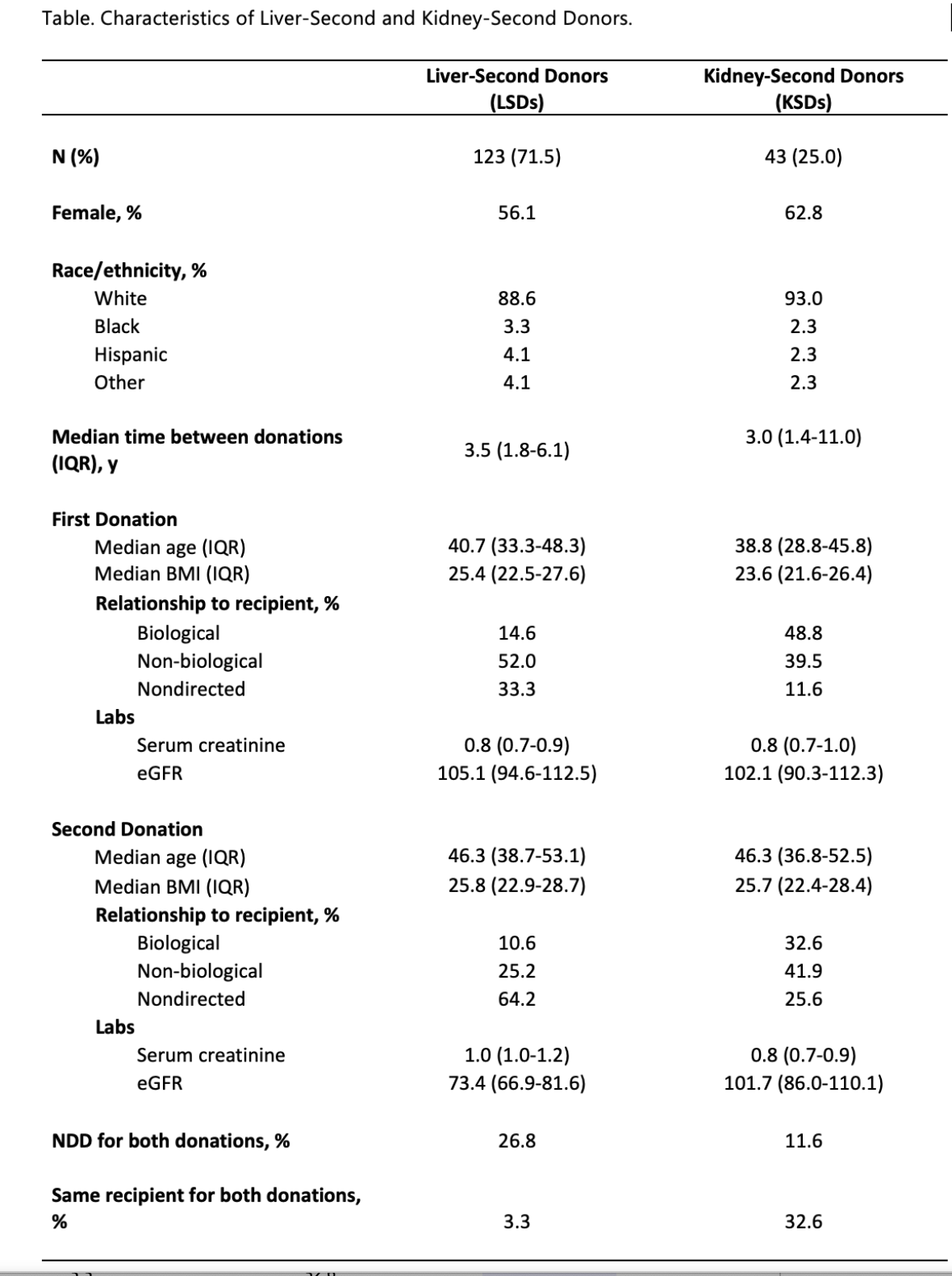Dramatic increase in repeat living organ donation
Carolyn Sidoti1, Kelly Terlizzi1, Conor Donnelly 1, Ian Jaffe 1, Macey Levan 1, Dorry Segev1, Allan Massie 1.
1Department of Surgery, Center for Surgical and Transplant Applied Research, NYU Langone Health , New York , NY, United States
Purpose: Some living organ donors go on to donate a second organ at a later date. This was described in a 2018 case series, but post-donation outcomes were not reported. We evaluate the safety of this practice to inform counseling of patients for repeat donation.
Methods: We used SRTR data 1994-2022 to identify 172 repeat living donors and their 320 recipients. We constructed a comparator group of first-time donors (FTDs) using weighting by the odds. We described clinical and lab results at 6 months, 1 year and 2 years post-donation. We conducted this methodology separately for kidney-second donors (KSDs) and liver-second donors (LSDs). Inference was consistent after regressing on sex, BMI, race and age in a doubly robust model.
Results: The annual count of living repeat donors increased from 5 in 2018 to 25 in 2019 (Figure). Of 172 donors, 123 were LSDs (71.5%) and 43 were KSDs (25.0%). 64% of LSDs, and 26% of KSDs, were nondirected donations (Table). Among LSDs, 11 patients were re-admitted (8.9%), 12 experienced post-surgical complications (9.8%), and one death was reported 2.5 years postdonation. LSDs had slightly higher mean (SD) serum creatinine values than FTDs at 6 months (1.12 (0.35) vs 0.86 (.04)), 1 year (1.09 (0.20) vs 0.87 (.05)) and 2 years (.08 (0.17) vs 0.87 (0.03)). Post-donation eGFR values were correspondingly lower (73.79 (14.28) vs 97.39 (2.17), 74.31 (13.26) vs 96.05 (2.24), and 72.78 (12.14) vs 94.52 (2.21)). Post-donation bilirubin, INR, AST, ALT and platelet count were comparable or improved, and hospital length of stay was 0.69 days shorter when compared with FTDs.
Among KSDs, no post-donation complications, re-admissions or deaths were reported. Mean (SD) serum creatinine values were comparable to first-time donors (1.14 (0.31) vs 1.21 (0.01) at 6 months, 1.20 (0.28) vs 1.19 (0.01) at 1 year, and 1.22 (0.28) vs 1.15 (0.01) at 2 years), as were eGFR values (71.02 (25.15) vs 64.86 (0.28), 64.71 (13.24) vs 65.88 (0.28), and 65.40 (16.41) vs 67.13 (0.28)), systolic blood pressure, and mean arterial pressure. Length of stay was 0.57 days shorter compared with FTDs.
Adult recipients of LSDs and KSDs experienced graft survival similar to recipients of FTDs.
Conclusions: Repeat donation increased dramatically after 2018. Follow-up data for living repeat donors show outcomes comparable to FTDs. Our study suggests that repeat living donation can be a safe practice for carefully selected donors.


